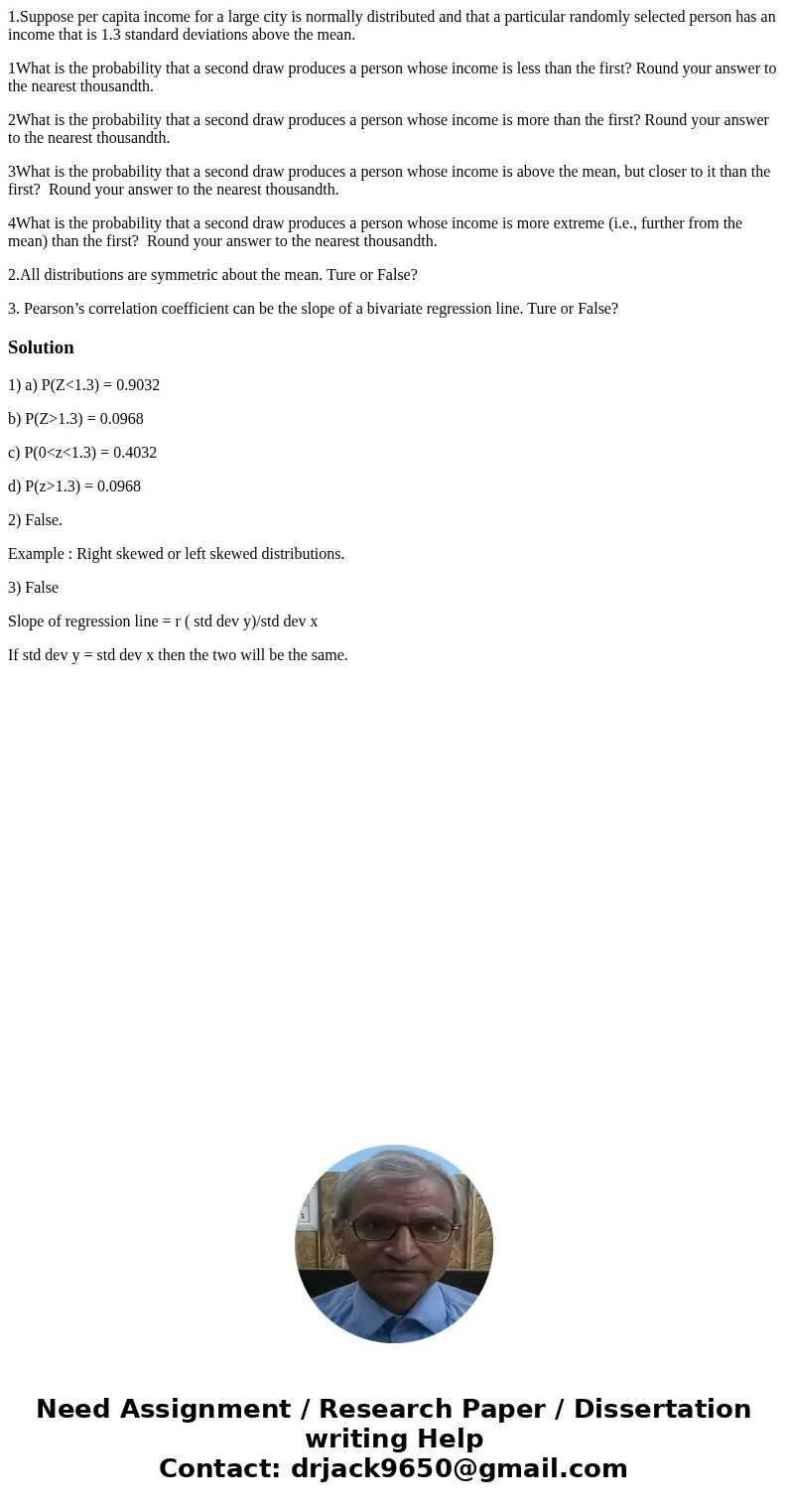1Suppose per capita income for a large city is normally dist
1.Suppose per capita income for a large city is normally distributed and that a particular randomly selected person has an income that is 1.3 standard deviations above the mean.
1What is the probability that a second draw produces a person whose income is less than the first? Round your answer to the nearest thousandth.
2What is the probability that a second draw produces a person whose income is more than the first? Round your answer to the nearest thousandth.
3What is the probability that a second draw produces a person whose income is above the mean, but closer to it than the first? Round your answer to the nearest thousandth.
4What is the probability that a second draw produces a person whose income is more extreme (i.e., further from the mean) than the first? Round your answer to the nearest thousandth.
2.All distributions are symmetric about the mean. Ture or False?
3. Pearson’s correlation coefficient can be the slope of a bivariate regression line. Ture or False?
Solution
1) a) P(Z<1.3) = 0.9032
b) P(Z>1.3) = 0.0968
c) P(0<z<1.3) = 0.4032
d) P(z>1.3) = 0.0968
2) False.
Example : Right skewed or left skewed distributions.
3) False
Slope of regression line = r ( std dev y)/std dev x
If std dev y = std dev x then the two will be the same.

 Homework Sourse
Homework Sourse